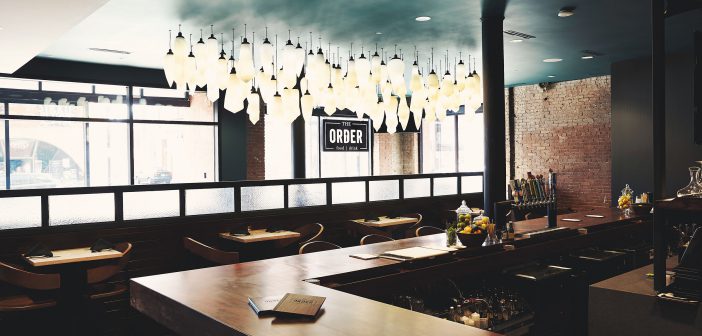The comfort of predictability in hotel stays gives way to the modern traveler’s yearning for experiences
by LISA GORDON
“In order to be irreplaceable, one must always be different.”
Those words, spoken by legendary French designer Coco Chanel, are as relevant today as they were when they first appeared in print back in 1972.
Being different isn’t always easy, but for hoteliers looking to deliver a transformative personal experience to their guests, it’s a must. In fact, defining what makes a hotel unique is the first step in creating a branding strategy that will live in the hearts and minds of all who stay there.
“There are a thousand places you can get a roof and a bed, but what will create loyalty and buzz is the experience people have,” said Dustin Myers, Chief Executive Officer of Longitude, a Springfield, MO-based hospitality branding agency founded in 2010.
He told Today’s Hotelier that Longitude helps its hotel clients identify the “guiding principles” that will influence guest interactions before, during, and after their visit.
“We define ‘brand’ as your reputation,” Myers said. “In the same way a person develops a reputation, we try to figure out how that hotel will look, and what they will say and do to align with how they want to be perceived.”
Perception is everything when it comes to today’s savvy travelers. They, too, subscribe to Chanel’s view that different is good, and they’re expecting hotels to deliver a main course of personalized experience with a healthy side of local flavor.
HOSPITALITY SUPERPOWERS
Few things in life are as personal as the food we eat and the beverages we drink. Both fill a basic human need, and smart hoteliers realize the best way to that 5-star rating on social media may indeed be through a guest’s palate.
“Food and beverage are superpowers of the hospitality experience,” says Kenn Fine, partner and executive creative director of FINE, a Portland, OR-based agency that believes “the profit you take is equal to the brand you make.”
He said creating a unique food or beverage experience is a “powerful enchantment” that should be considered by everyone in the hospitality sphere. But before rolling out that signature cocktail or house dessert, it’s worth taking some time to figure out how the offering fits into your brand.
“The stakes are higher if you want to play in the food and beverage arena,” Fine said. “This is something you’re putting inside your body, so it’s a rather intimate experience. Food and beverage is primal; it connects to the primal self. Being trite about its delivery will get anemic results for that reason. Humans feel that.”
FINE recently collaborated on the relaunch of Lizzie’s Starlight, a renowned rooftop bar perched on top of San Francisco’s iconic Sir Francis Drake Hotel. In an allusion to Queen Elizabeth I’s alleged affair with Drake, the bar is opulent with a rebellious air. Amidst high Elizabethan collars and extravagant makeup, servers deliver custom aphrodisiac-themed cocktails.
In San Diego, FINE is helping the Hotel del Coronado reimagine the entire guest experience. One of the primary tools in the arsenal is a new approach to food and beverage.
“By being extremely thoughtful in the diversity and exclusivity of the range of food and beverage offerings, we can ensure we have something to accommodate the mindset of any guest,” Fine said.
“That builds strong brand credibility – every time I need something, it’s right there – and the sense of being an omnipotent provider. There is a tremendous amount of experience engineering. It keeps them on the property and increases incremental revenue rather significantly.”

LOCALIZE THE EXPERIENCE
Gone are the days when travelers would gravitate toward national chains because they knew exactly what they were going to get. Nowadays, people are looking to breathe local air and taste local fare.
“Thinking back to creating that experience, historically, we’ve seen little touches like fresh chocolate chip cookies, or coffee and tea in the lobby,” Longitude’s Myers said. “I think the idea of having these things as part of the experience is excellent, but at times there isn’t a lot of effort. Instead of serving gas station coffee, maybe you could collaborate with a local roaster down the street or a local bakery.”
Tying what you’re offering into the local community or region makes for an experience people want to tell their friends about.
The Hotel Vandivort in Springfield “knocks it out of the park” when it comes to cultivating experience, Myers said. “They have a collaboration with the coffee shop down the street, so they’re doing custom roasts and offering really high-quality local goods in the hotel.”
Sometimes, a hotel’s architecture will provide the key to defining its exceptional brand.
Longitude works with one such property that has an ancient Chinese architectural motif, “so we look for ways to bring in pieces of the culture – maybe an imported tea – and try to help tell the brand story through all of the senses.”
In another example, Myers said Longitude is working with a hotel in Dallas to create beverages named after local places and things.
“If the hotel has a restaurant in it, that opens a whole new category of ways to surprise and delight the customers.”
UNITED VISION
Branding experts agree that it is crucial for hotels to take the time to thoroughly define their brand and their position in the marketplace.
One technique FINE employs when helping a customer solidify its brand is to assign it a human persona. In effect, the agency introduces a creative muse.

“If you met the hotel at a cocktail party, what would it dress like? What would the conversation be like? The main thing is having a clear position in the marketplace; a clear perspective on what you intend to be,” explained Fine.
It’s evident that the manner in which a new brand is introduced has a significant impact on its chances for success. Both Myers and Fine agreed it’s essential to obtain input and buy-in from the whole team.
“We see so many of these projects happen in silos,” Fine lamented. “People are stepping on each other’s yoga mats constantly. You need the brand people up front so you know who you’re aiming for. Then, you have your kitchen director, general manager, corporate, etc., so there is a united vision for what is going to happen.”
It helps to simply write down your branding strategy, Myers added.
“The first thing I’d do is really make sure your strategy is understood by the team and even created with other stakeholders involved. We see a lot of decisions made haphazardly and people pivot all the time, and that leads to confusion for the customers and wasted time and resources.”
As for boutique hotels vs. chains, Fine said that while it’s easier for one-of-a-kind properties to roll out changes, they often have less funding to make them happen.
“Sometimes, systems don’t happen and you have brand drift. And so that’s the challenge with boutiques,” he said. “Although, some of the best successes are with boutiques, too.”
The main thing is to obtain buy-in from all stakeholders and then stay on course. Straying off the path can be costly, in more ways than one.
“The really sad thing about not being aligned around a united brand and experience intent is that ownership and management never get to see the incremental margin they’re missing out on because they didn’t do it right,” Fine concluded. “There is a lack of retroactive accountability.”




